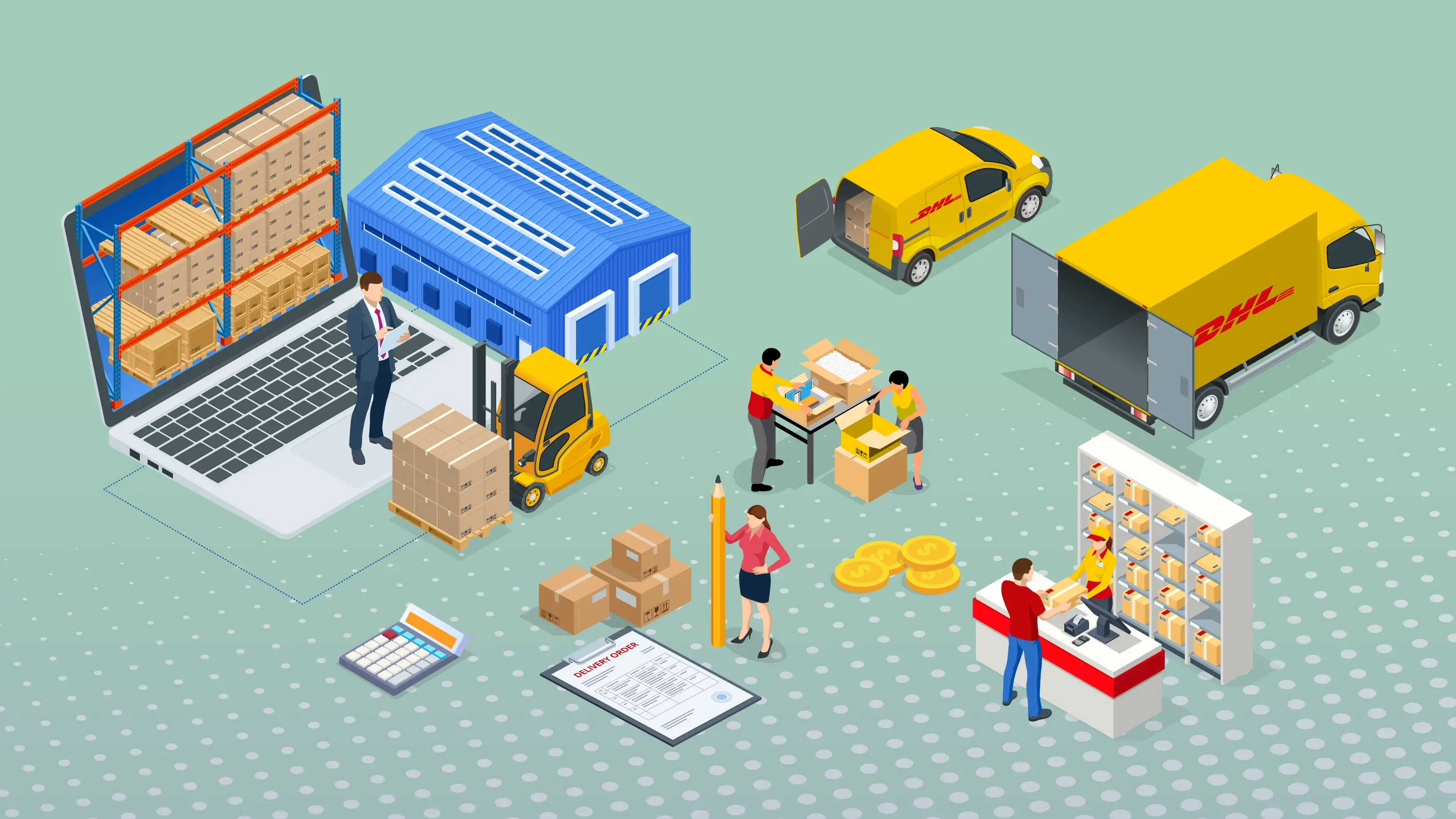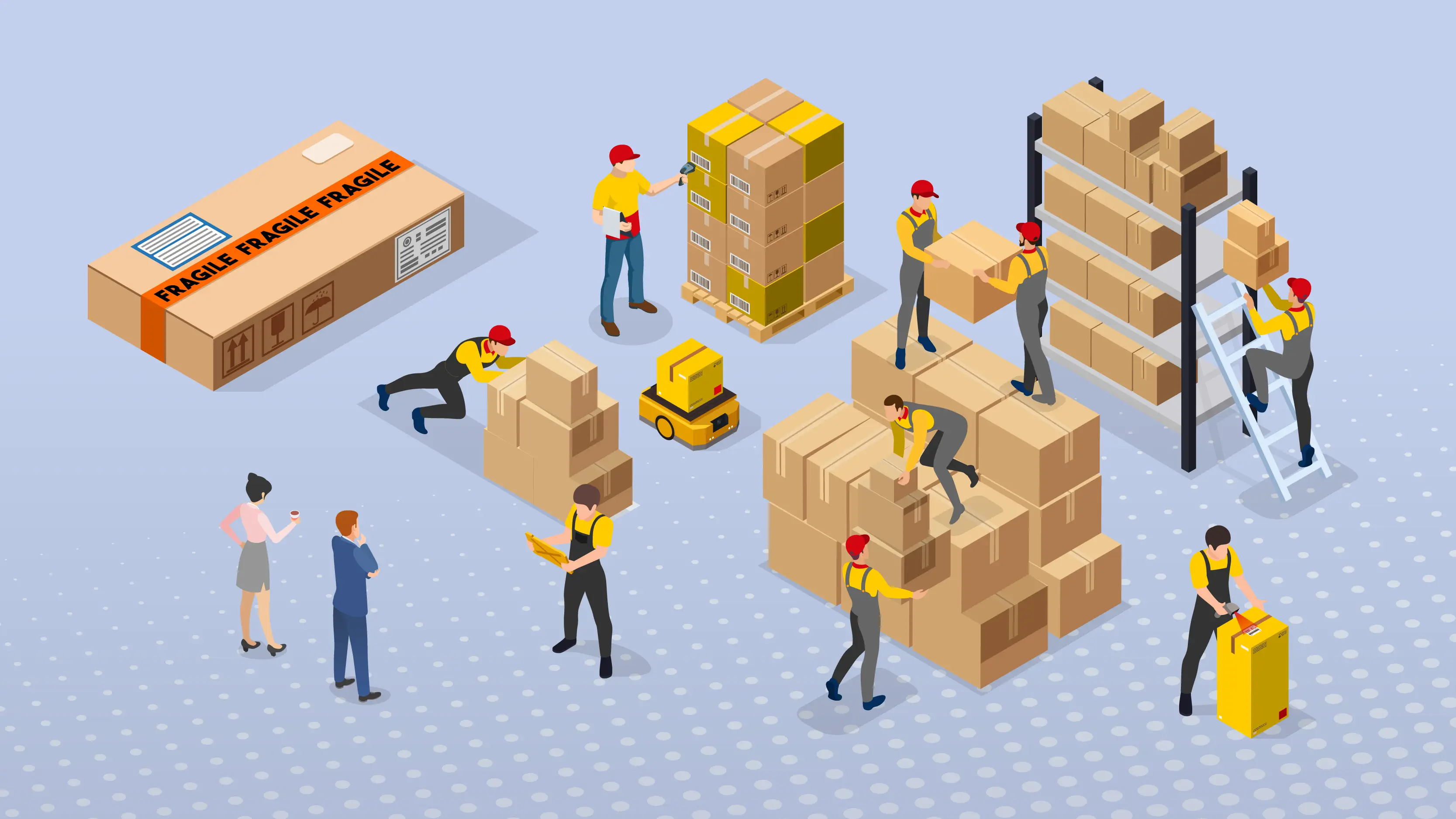Peak Season is nearly here – the busiest time of year for all the SME Superheroes out there! We know you’ll have a million things on your to-do list, from anticipating seasonal inventory demand to meeting holiday shipping deadlines, so we’re here as your trusty sidekick to help you manage the rush! Read on for our top logistics tips for small businesses this Peak Season.
What is Peak Season?
For retailers, Peak Season is the busiest shopping period of the year. Typically kicking off on Black Friday (Friday 29th November this year), it is followed by Cyber Monday (Monday 2nd December), and then Christmas. Furthermore, in recent years, China’s Singles’ Day (Monday 11th November) has also gained momentum across the world, which means it should be in your sale season calendar too.
Many e-commerce retailers offer deals earlier and earlier each year to cash in on the buzz, which means your business should be preparing now.
Prepare for Peak Season: 13 logistics tips for small businesses

1. Plan your seasonal inventory needs
It’s called Peak Season for a reason; it’s not unusual for some retailers to make over 50% or more of their annual sales in the month up to Christmas. To avoid overstocking or understocking, leverage inventory management software. It will analyze your past sales data and seasonal trends to help you more accurately forecast demand. It will track your stock levels, in real-time, and automatically send replenishment orders to suppliers so that you’re never left short.

2. Tap into AI
Artificial intelligence is helping small businesses transform their logistics – saving them time and money. A few examples of technology to consider as the Peak Season approaches:
- Automated warehouse systems – robotics can manage key warehouse processes such as picking, sorting and packing – fulfilling orders quicker and more accurately than humans.
- Dynamic pricing – smart software driven by AI and machine learning will read your sales data in real time and then automatically adjust your pricing accordingly. For example, it will apply discounts on your website to slow-moving stock.
- Automate routine enquiries – AI can help your business offer exceptional customer service over the busy season. For example, AI chatbots can respond to customers’ queries more accurately, and use past customer browsing data to offer personalized gift recommendations. And, unlike human agents, chatbots are available 24/7 and able to handle an unlimited number of concurrent interactions – meaning your business will never miss a sales opportunity.
AI in logistics: the key to better productivity

3. Use an omnichannel platform for content creation
As any e-commerce business knows, customer interactions and sales often occur in several places – including online marketplaces, in app, and on social media. An omnichannel marketing platform will help you deliver consistent messaging across all channels. The software will analyze customer data to build a detailed picture of customer intent and preferences and then create personalized messaging. All of which means your business can deliver more engaging and relevant campaigns.

4. Get your website in tip-top shape
Your e-commerce website will receive an increase in traffic during the Peak Season. Is your site prepared to manage the surge in traffic without the page-load speed suffering? Now is the time to check.
Make your website welcoming to gift buyers, too:
- Put holiday promotions front and center on the home page to engage visitors
- Segment your website’s product pages into different gift categories such as “gifts for him”, “gifts for children” etc.
- Allow customers to create and save wish lists
You can check off the other essential e-commerce website features with our dedicated guide.
5. Don’t forget about mobile
91% of shoppers make online purchases using their smartphone, so make sure your e-commerce website is optimized for the small screen. Have you thought about larger font and button sizes? Removed excess logins and pop-ups? Kept form fields to a minimum? These factors are crucial to any successful m-commerce strategy.

6. Shout about your sustainable e-commerce policies
Sustainability is no longer a niche subject for consumers, with many choosing to be more considered with their purchasing choices. So, whatever your eco policies are – from carbon insetting to offering eco-friendly packaging – be sure to be clear about them on your website. It might just be the difference between a customer choosing your brand over a competitor.
7. Use your packaging as a marketing tool
The main function of your packaging is to protect your products – so it should be robust, transportable, and easily opened and closed for returns. However, it can also serve as a powerful marketing tool. Stylish, innovative packaging, and personalized messaging or storytelling, can add a little something extra to your customers’ purchases.
Remember too that consumers are increasingly eco-conscious when shopping online. Consider using sustainable packaging but be sure to understand the pros and cons of each packaging material, in terms of renewability, timeframe, energy sources needed and availability. If possible, provide an option for customers to send back their empty packaging in return for a discount. You can then recycle or reuse it.

8. Keep in close touch with international suppliers
It’s common practice for sellers to source products and materials from overseas manufacturers, where production is cheaper. But times are trickier than ever for global supply chains.
If you’re relying on manufacturers from overseas, it’s important to have regular communication both in the run-up and throughout the busy period. You should be checking in with your suppliers several times a week for status updates on all purchase orders so that if there are delays or problems, you can react quickly to find a solution that won’t disappoint customers.
Relying on just one supplier has always had risks, so it’s worth considering diversifying your suppliers. Having more than one gives your business a safety net should unexpected events occur, and there will also be fewer bottlenecks in your production line at times of peak demand.

9. Streamline your processes
Aligning your supply chain processes is something you should be doing anyway, not just during Peak Season. An order management system (OMS) will monitor data from your various systems to track sales, orders, inventory and fulfillment so that you can get your orders to your customers cheaper and faster.
Ultimately, an agile supply chain is a strong supply chain, and an OMS will help you build that by informing you immediately when orders are cancelled, inventory quantities change, or there are delays with fulfillment, so you can pivot quickly.
10. Plan your staffing needs
If you’re going to need extra staff for your warehouse, or to manage overflow storage facilities, start recruiting now. Allow time to onboard the teams and train them to deal efficiently with all your orders. If possible, surge test typical peak demands in your warehouse before the season begins. After all, efficient order fulfillment and customer service is what keeps those customers coming back.

11. Offer flexible holiday shipping
Whilst your business will be busy juggling a million things over the Peak Season, the main thing your customers will care about is delivery. They want flexible and convenient delivery options – and won’t hesitate to go to a competitor of yours if you can’t meet their wishes. That’s where offering DHL Express’ On-Demand Delivery will give your business an advantage, allowing your customers to choose exactly when and where their orders are delivered – with full tracking, too.
12. Make returns work for you
Frustrating as returns are to manage, giving customers a simple, stress-free experience can be the difference between them coming back to your store or not, so be sure to have a clear returns policy in place.
Enabling your customers to drop their returns to a parcel locker means your logistics partner can collect more of them from a single location. Not only will this bring costs down, but it will also result in fewer carbon emissions.
There are things you can do to make returns less likely in the first place – such as including detailed information and high-quality photos and video on your website, so customers can see exactly what they’re buying.
13. Plan your after-sales strategy in advance
Peak Season may bring new customers to your store and you’ll want to ensure they return. So, while it may seem like thinking a long way ahead, now is also the time to put together your after-sales strategy.
Sending a thank-you email is a nice touch and inviting customer feedback will help you improve your service. You could also send a follow-up email to recommend other products from your store or offer the customer a discount on their next purchase. It all strengthens the links between your brand and your customer and improves the chances of them buying from you again.
Finally, we hope you’ve found this guide useful and wish you every success with 2024’s Peak Season!
Attention SME Superheroes! With Peak Season nearly here, we know there are a million things for small businesses to consider. But don’t fret! Use our dedicated Peak Season Sales & Logistics Checklist to ensure your business is fully prepared to cash in on every opportunity. Happy selling!
Download your free checklist here
